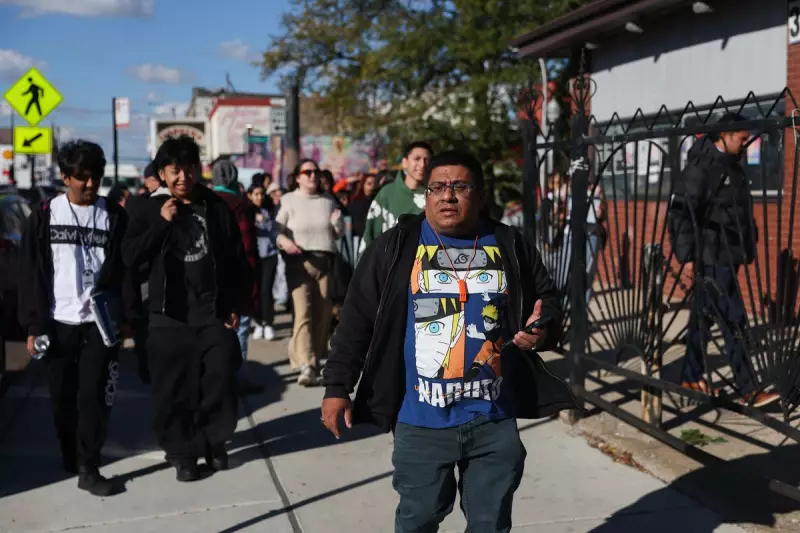
In Chicago's predominantly Mexican neighbourhood of Little Village, activist Baltazar Enriquez begins his daily routine with determined purpose. Each morning, he embarks on street patrols, scanning the area for immigration agents who have repeatedly targeted his community. With an orange whistle hanging from his neck and his plans broadcast live to thousands of Facebook followers, Enriquez represents the frontline of Chicago's growing resistance movement.
The Sound of Whistle-Led Resistance
As an unprecedented federal immigration crackdown enters its third month, Chicago residents are mounting what many describe as a uniquely local response to what they perceive as racist government overreach. The sound of whistles has become the clearest indicator of this growing resistance, with Enriquez credited among the first to introduce the concept.
"We don't know if they're going to come back. All we know is we've got to get ready," Enriquez tells his followers, encouraging them to report suspicious vehicles. The furious blasts of whistles serve dual purposes: warning residents of immigration agents' presence and attracting observers who record video or verbally challenge officers.
By October, neighbourhoods across Chicago were hosting "Whistlemania" events to distribute the brightly coloured devices through businesses and free book hutches. "They want that orange whistle," said activist Gabe Gonzalez. "They want to nod to each other in the street and know they are part of this movement."
Community Networks and Midwestern Solidarity
Chicago's response has tapped into established activist networks and everyday residents from wealthy suburbs to working-class neighbourhoods. Despite its 2.7 million residents, Chicago operates as a collection of small towns with Midwestern sensibilities, where people know their neighbours and help spreads quickly.
When immigration agents began targeting food vendors, Rick Rosales enlisted his bicycle advocacy group Cycling x Solidarity. He organised rides to visit street vendors, buying out their inventory to reduce their risk while supporting their businesses simultaneously.
Irais Sosa, co-founder of apparel store Sin Titulo, initiated a neighbour programme providing grocery runs and rideshare gift cards for families afraid to venture outside. "That neighbourhood feel and support is part of the core of Chicago," she explained.
Enriquez's organisation, Little Village Community Council, saw its volunteer walking group—which escorts children to school—grow from 13 to 32 students, demonstrating the community's commitment to protecting its most vulnerable members.
Federal Pushback and National Interest
More than 3,200 people suspected of violating immigration laws have been arrested during the operation dubbed "Operation Midway Blitz." Dozens of US citizens and protesters have faced charges ranging from resisting arrest to conspiring to impede an officer.
The Department of Homeland Security defends the operation, alleging officers face hostile crowds while pursuing violent criminals. Gregory Bovino, the Border Patrol commander who brought controversial tactics from operations in Los Angeles, described Chicago as a "very non permissive environment."
Despite the challenges, Chicago's resistance model is gaining national attention. Alonso Zaragoza, working with a neighbourhood organisation in the heavily immigrant Belmont Cragin area, has printed hundreds of "No ICE" posters for businesses. Organisers from Oregon and Missouri have sought advice on implementing similar strategies.
Virtual know-your-rights trainings offered by pro-democracy group States at the Core have seen participation double from 500 to 1,000 over a recent month, drawing interest from New Jersey and Tennessee residents.
As the operation's intensity may soon subside in Chicago—with Bovino indicating Customs and Border Protection will target other cities—the legacy of Chicago's community-led resistance continues to inspire similar movements nationwide, proving that organised local action can confront even the most aggressive federal initiatives.





